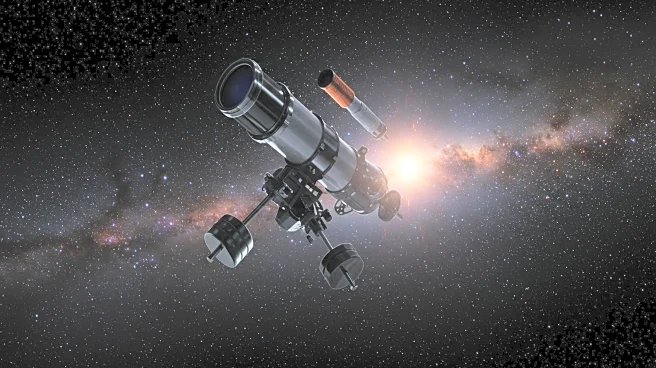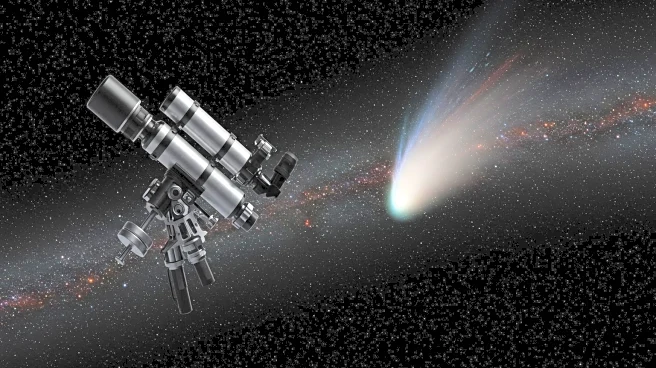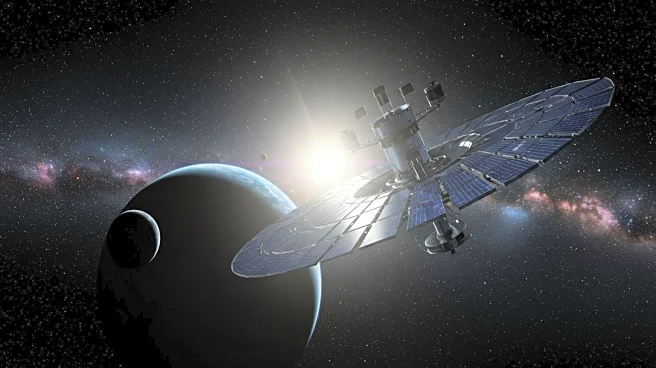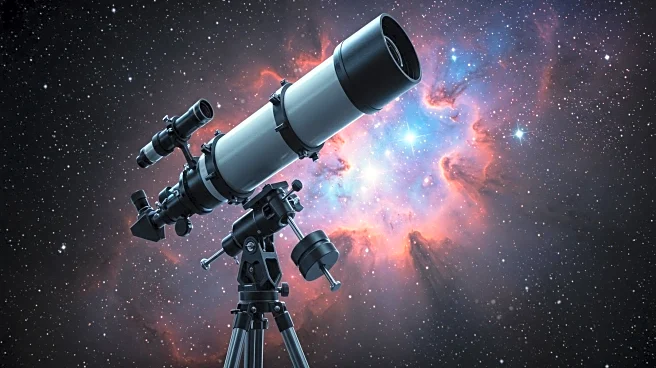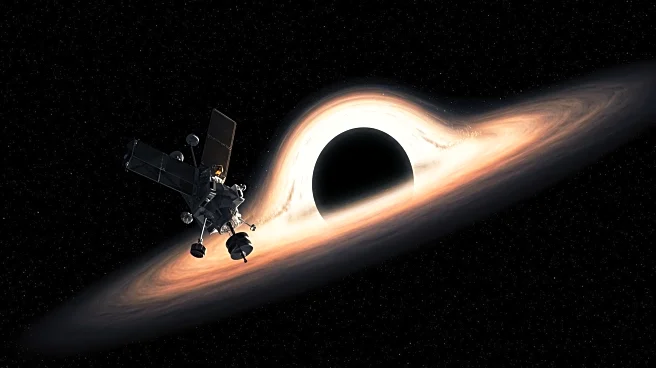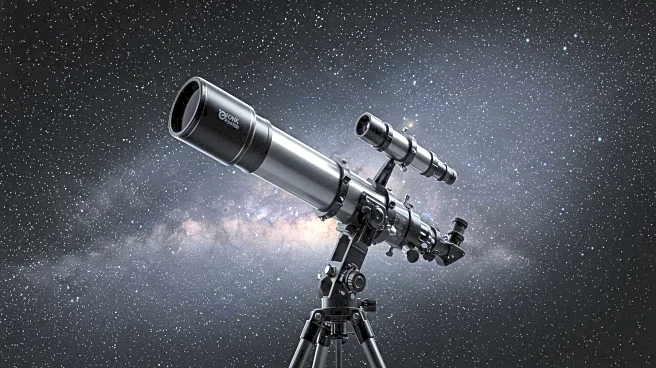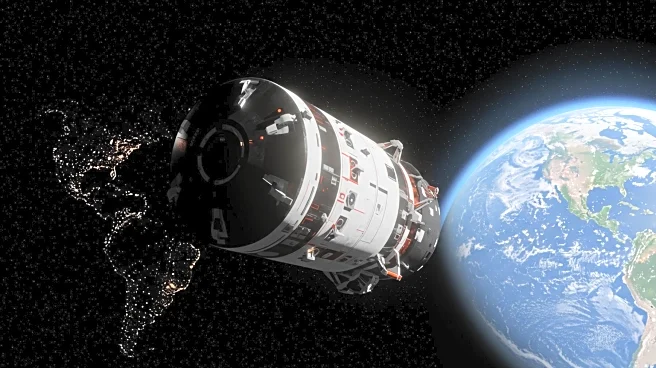What's Happening?
NASA's Nancy Grace Roman Space Telescope is set to launch by May 2027, aiming to trace cosmic expansion over time through the High-Latitude Time-Domain Survey. This survey will focus on detecting tens of thousands of type Ia supernovae, which are crucial for studying the universe's expansion history. The telescope's near-infrared Wide Field Instrument will capture a vast area, allowing for unprecedented observations of supernovae and other transient cosmic phenomena. The survey will help measure the expansion history of the universe, providing insights into dark matter and dark energy.
Why It's Important?
Understanding cosmic expansion is vital for comprehending the universe's evolution and the nature of dark energy. Type Ia supernovae serve as cosmological probes, offering a way to measure distances and expansion rates. The Roman Space Telescope's ability to detect distant supernovae will extend the timeline of cosmic expansion studies, potentially revealing changes in dark energy over time. This research could lead to breakthroughs in cosmology and enhance our understanding of the universe's fundamental forces.
What's Next?
The Roman Space Telescope will conduct observations over a five-year period, revisiting fields regularly to detect transient objects. The survey will include a spectroscopic component to analyze supernovae and other phenomena. Collaborations with ground-based observatories will complement the telescope's findings, providing a comprehensive view of cosmic expansion. The data collected will be crucial for testing theories about dark energy and refining models of the universe's growth.
